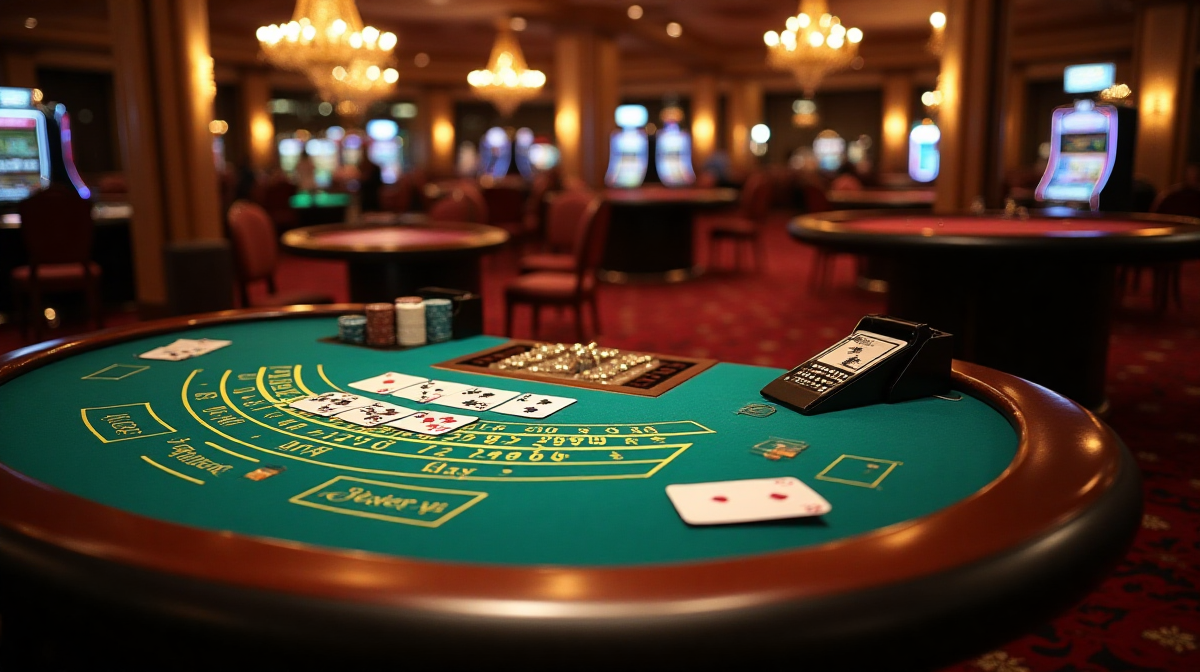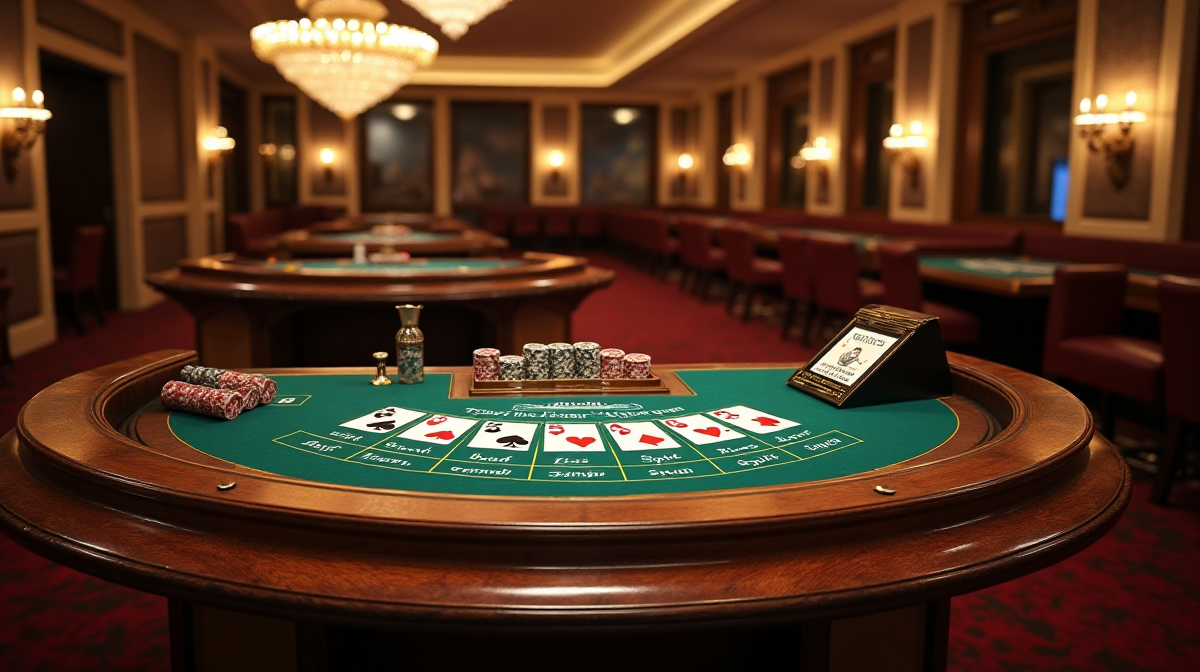Blackjack Meaning: A Beginner's Deep Dive
Introduction to Blackjack
What is Blackjack? – A Concise Definition
Blackjack, also known as 21, is a casino game pitting players against the dealer. The aim isn’t necessarily to get 21, but to beat the dealer’s hand without exceeding 21. It’s a game of skill and chance, and understanding the rules is key to enjoying – and potentially winning – at the table. Many enjoy the thrill of betking sports and often find blackjack a captivating alternative.
The Objective of the Game – Beating the Dealer
The primary goal in blackjack is to have a hand value higher than the dealer’s, without going over 21. If you exceed 21, you “bust” and automatically lose. If the dealer busts, you win, regardless of your hand's value (unless you've already busted). A hand totaling 21 with your first two cards is called a blackjack and typically pays out at higher odds.
Brief History of Blackjack – Origins and Evolution
The origins of blackjack can be traced back to the 18th century in France, where it was known as “Vingt-et-Un” (21). It arrived in the United States with French colonists and evolved over time. The addition of the bonus payout for a blackjack (Ace and a 10-value card) was introduced in the 1930s to encourage players. Today, it’s a staple in casinos worldwide and increasingly popular in sports online betking platforms.
Understanding the Core Blackjack Components
The Deck – Standard vs. Multiple Decks
Blackjack typically uses a standard 52-card deck. However, casinos often use multiple decks (often 6 or 8) shuffled together to make card counting more difficult. The number of decks used affects the odds slightly.
Card Values – Numerical Values & Face Card/Ace Values
Number cards (2-10) are worth their face value. Face cards (Jack, Queen, King) are each worth 10. An Ace can be worth either 1 or 11, depending on which value benefits the hand the most.
Basic Terms – Bust, Hit, Stand, Double Down, Split, Push
- Bust: Exceeding a hand value of 21.
- Hit: Requesting another card.
- Stand: Declining to take any more cards.
- Double Down: Doubling your initial bet in exchange for one additional card.
- Split: Dividing a pair of identical cards into two separate hands.
- Push: A tie between the player and the dealer, resulting in the return of the bet. Accurate betking sports prediction doesn’t apply to blackjack, as it relies on chance and skill.
The Blackjack Hand – What constitutes a valid hand?
A valid hand in blackjack consists of any combination of cards totaling 21 or less. Hands are evaluated based on the combined value of the cards. For example, a 7 and an 8 equal 15.

Gameplay: A Step-by-Step Guide
The Deal – How the cards are distributed
The game begins with players placing their bets. The dealer then deals two cards face up to each player and two cards to themselves – one face up and one face down (the “hole card”).
Player’s Turn – Options & Decision Making
Starting with the player to the dealer’s left, each player has the opportunity to improve their hand by hitting, standing, doubling down, or splitting. These decisions should be based on the player's hand and the dealer's upcard.
Dealer’s Turn – Dealer Rules & Restrictions
After all players have completed their turns, the dealer reveals their hole card. Dealers typically must hit on any hand totaling 16 or less and stand on any hand totaling 17 or more.
Winning & Losing – Determining the outcome of the hand
If a player’s hand is higher than the dealer’s without busting, the player wins. If the dealer busts, all remaining players win. If the player and dealer have the same hand value, it’s a push.
Payouts – Understanding Blackjack Odds & Bets
A standard win pays 1:1 (even money). A blackjack (Ace and a 10-value card) typically pays 3:2. The house edge in blackjack is relatively low, especially when basic strategy is employed.
Advanced Blackjack Actions & Rules
Splitting Pairs – When & How to Split for Advantage
If you are dealt a pair (two cards of the same rank), you can split them into two separate hands, each requiring a separate bet. Splitting Aces is often advantageous, while splitting 10s is generally discouraged.
Doubling Down – Strategic Doubling Opportunities
Doubling down allows you to double your initial bet in exchange for receiving only one additional card. This is a strategic move best used when you have a strong starting hand and the dealer has a weak upcard.
Surrender – When to Cut Your Losses
Some casinos offer a surrender option, allowing you to fold your hand and forfeit half your bet. Early surrender allows this before the dealer checks for blackjack, while late surrender is after.
Insurance – Protecting against Dealer Blackjack
If the dealer’s upcard is an Ace, players are offered insurance – a side bet that the dealer has blackjack. It’s generally not advisable to take insurance, as the odds are not in your favor.
Side Bets – An Overview
Many casinos offer side bets in blackjack, such as “21+3” or “Perfect Pairs.” These bets have different payouts and odds than the main game.
Blackjack Strategy: Getting an Edge
Basic Strategy – The Foundation of Smart Play
Basic strategy is a mathematically derived set of rules that tells you the optimal play in every possible situation, based on your hand and the dealer’s upcard.
Basic Strategy Charts Explained - How to Use Them
A basic strategy chart provides a quick reference guide to the best move to make in each scenario. Learning and using a chart significantly improves your odds.
Understanding Counting Cards
Card counting involves tracking the ratio of high to low cards remaining in the deck. While not illegal, casinos frown upon it and may ask suspected counters to leave. It requires significant skill and practice. It’s different than using betking sports prediction for other events.
Bankroll Management – Playing Responsibly
Proper bankroll management is crucial for long-term success in blackjack. Set a budget and stick to it, and never bet more than you can afford to lose.
Blackjack Variations
European Blackjack vs. American Blackjack – Key Differences
European Blackjack typically deals the second card to the player after they’ve made their initial decisions. American Blackjack deals both cards face up at the beginning.
Spanish 21 - Unique Rules & Strategy
Spanish 21 uses a 48-card deck (no 10s) and offers bonus payouts for certain hands.
Pontoon – A British Variation
Pontoon has unique rules, including the player winning with a hand of 21 (called a “Pontoon”) and the dealer hitting on 17 or less.
Online Blackjack – Adapting Strategy to Virtual Games
Online blackjack offers convenience and a wide range of betting options. The basic strategy remains the same, but the pace of the game may differ.

Avoiding Common Blackjack Mistakes
Ignoring Basic Strategy
The biggest mistake players make is deviating from basic strategy.
Taking Insurance Too Often
Insurance is almost always a bad bet.
Not Managing Your Bankroll
Poor bankroll management can lead to quick losses.
Chasing Losses
Trying to win back losses with larger bets can be disastrous.
Resources for Further Learning
Recommended Books
- Beat the Dealer by Edward O. Thorp
- Blackjack for Dummies by Kevin Blackwood
Helpful Websites & Online Tools
- BlackjackInfo.com
- WizardofOdds.com
Blackjack Simulators & Practice Games
Many online casinos offer free blackjack simulators that allow you to practice your strategy without risking real money. Understanding blackjack chart principles is easier with these tools.

